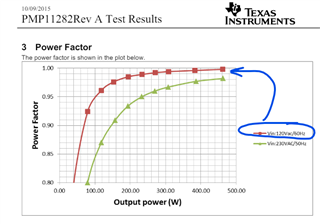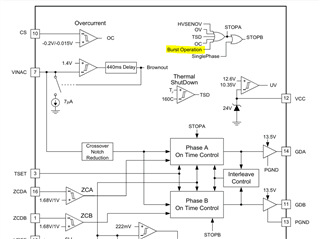Other Parts Discussed in Thread: UCC28070-Q1, UCC2818A-Q1, UCC28063, UCC28061, PMP11282, UCC28060, UCC28180, UCC2818, UCC2818A
Tool/software:
Hi TI Team,
Can you suggest an automotive analog PFC controller for the following requirements?
1. Input voltage range: 90VAC to 135VAC
2. Peak output power: 300W
3. Rated output power: 200W
4. Standby load power: 10W
5. Standby power factor: 0.85 lagging
6. Rated and peak power factor: 0.95
In this application, the system will mostly operate under standby load power, the rated and peak power load will operate for a short duration of less than a minute of time. I found the UCC28061-Q1 from an online source, but I would appreciate any suggestions for better ICs if available. If not, could you share the power factor curve for the UCC28061-Q1 EVM from no load to full load? This information will be helpful for selecting this IC for my design.
Best Regards,
Aravind S.





